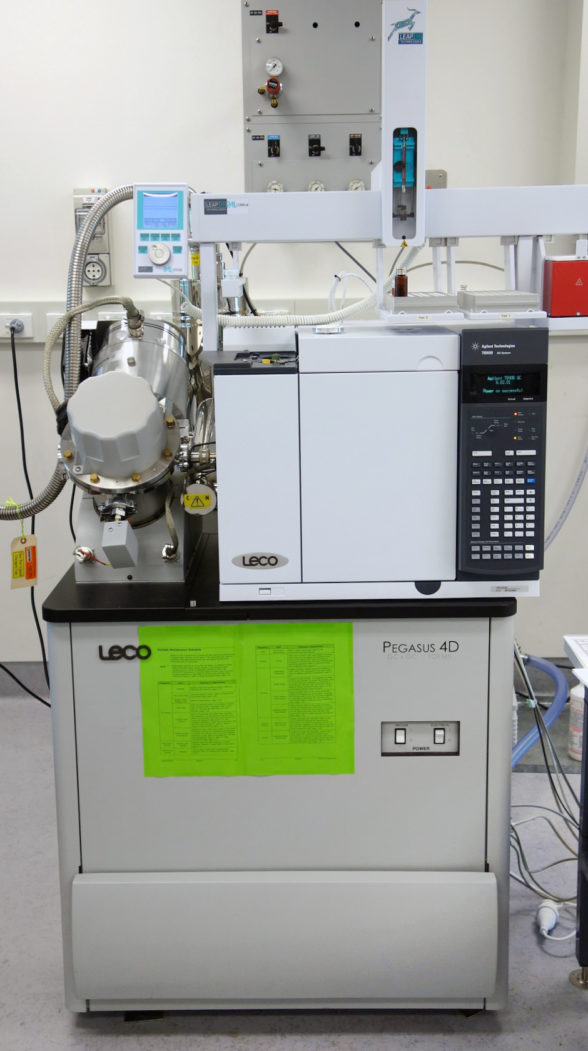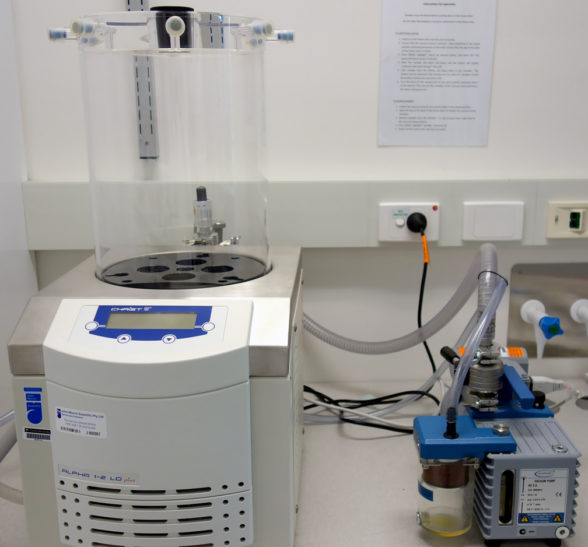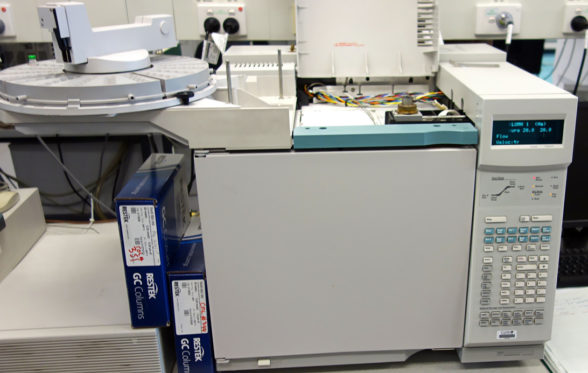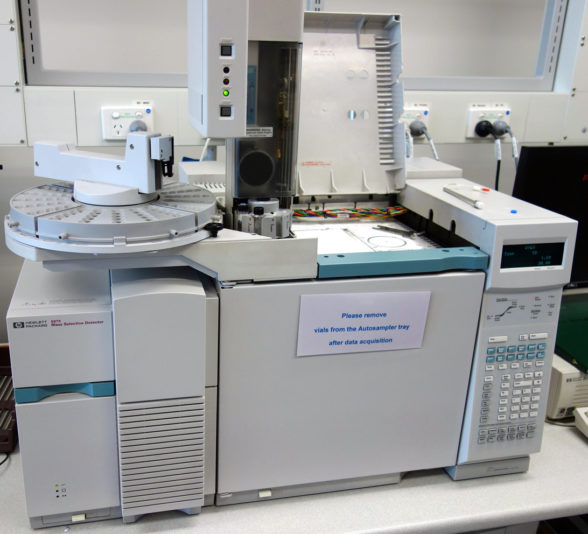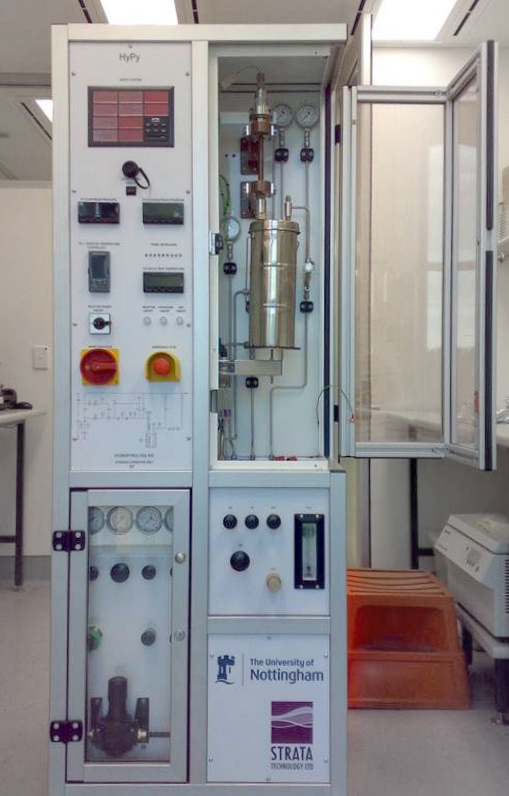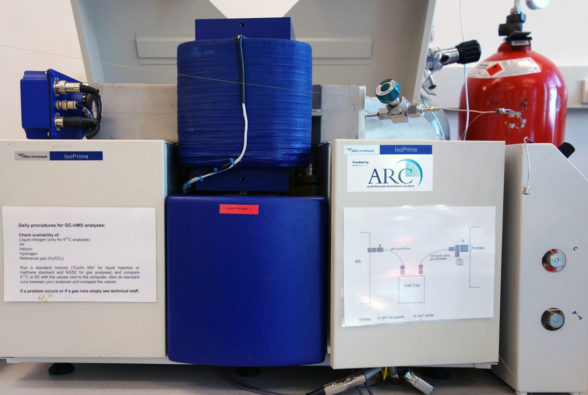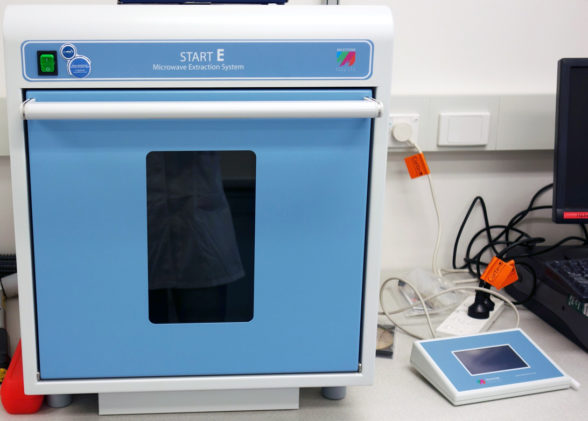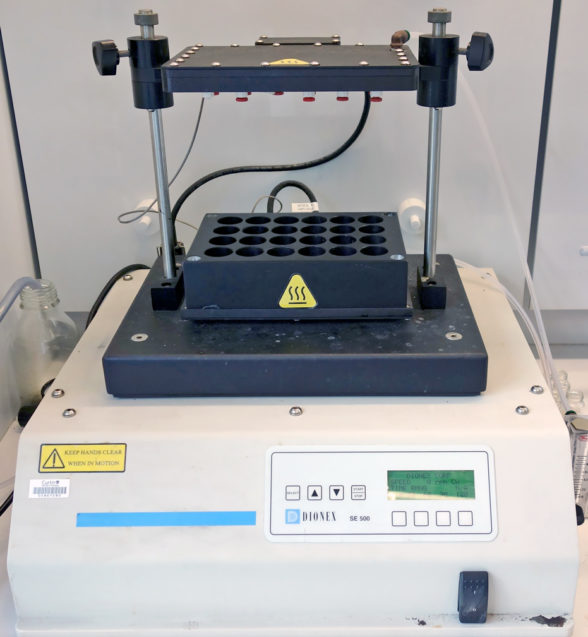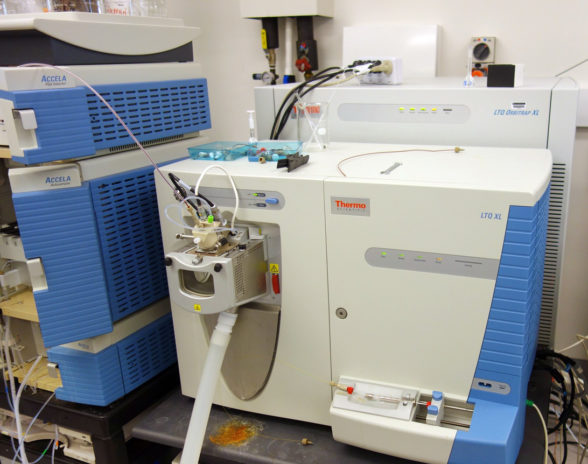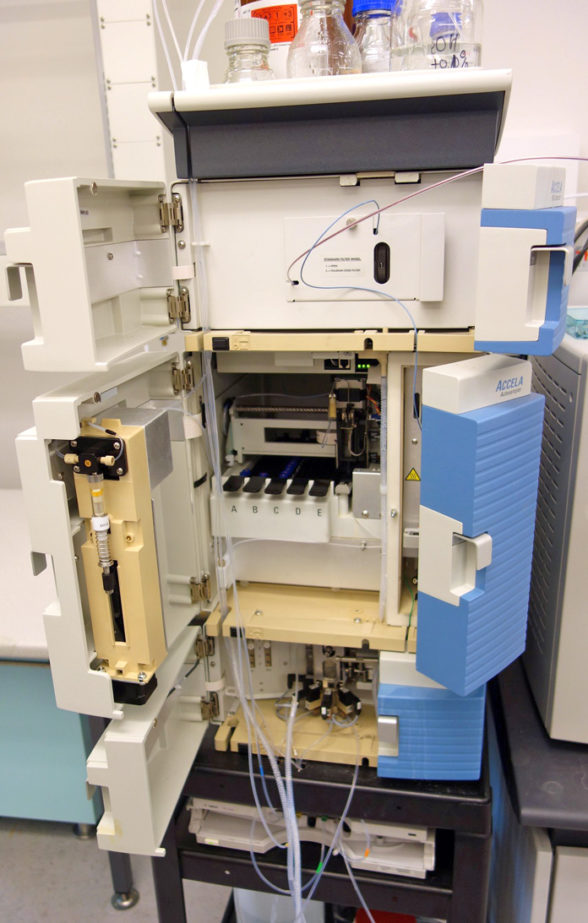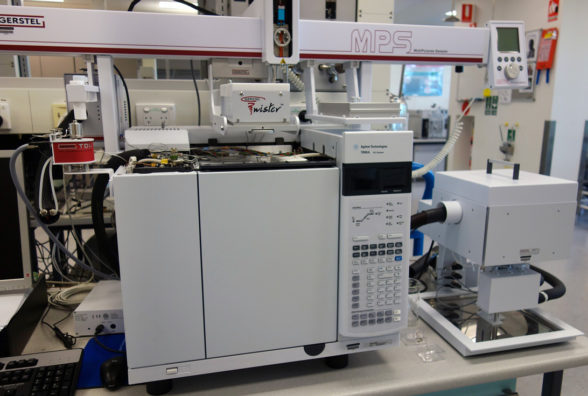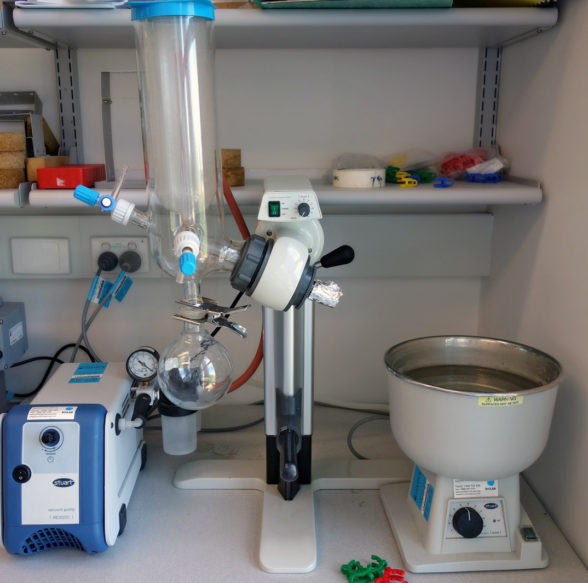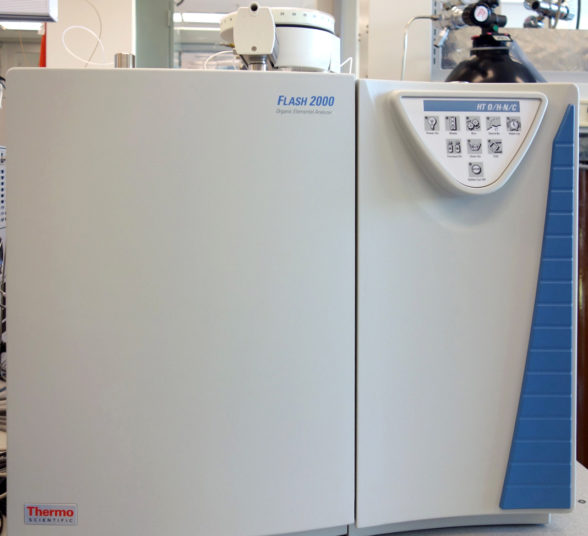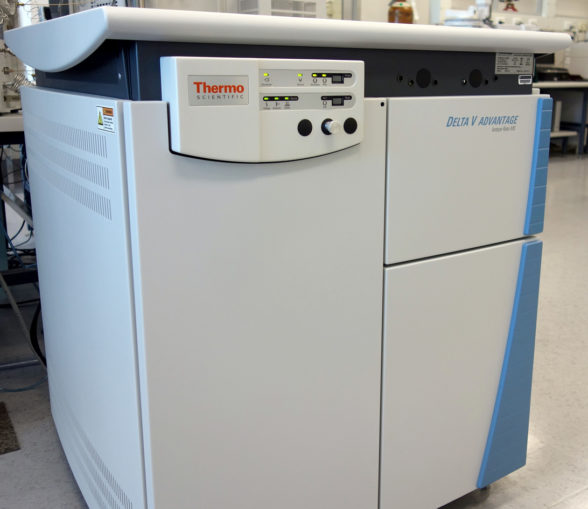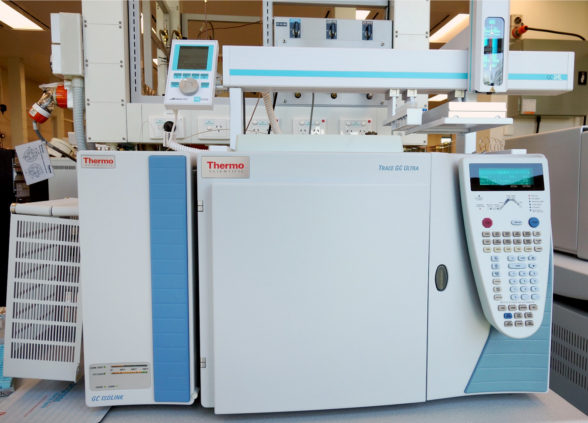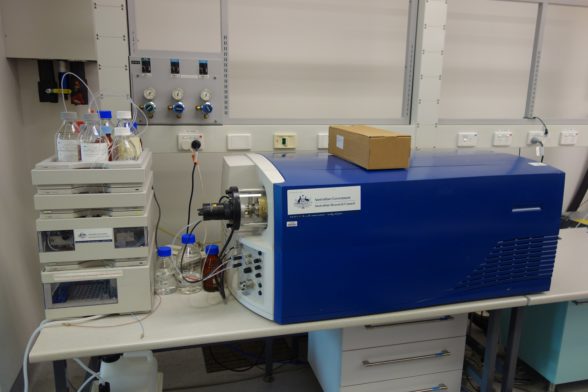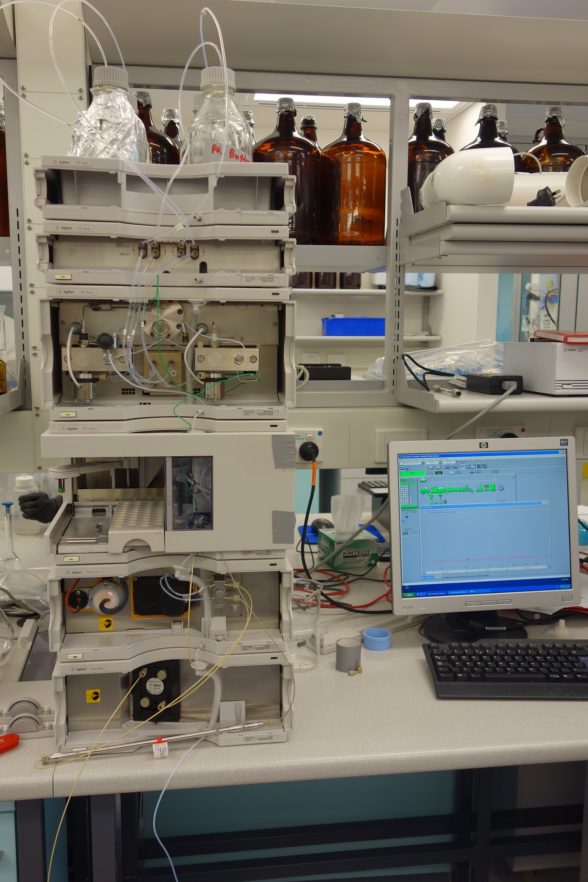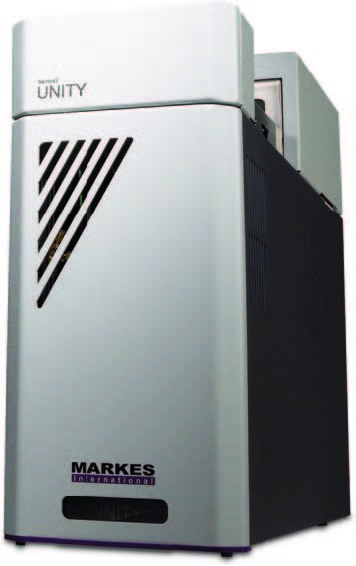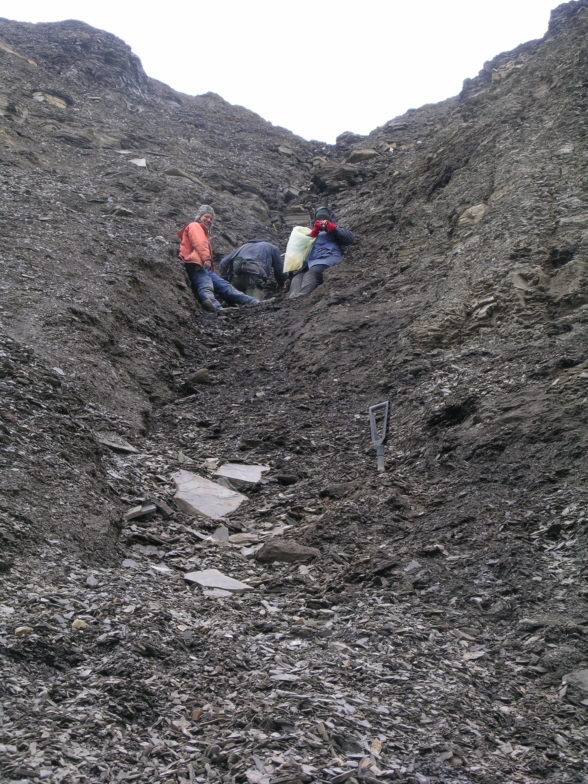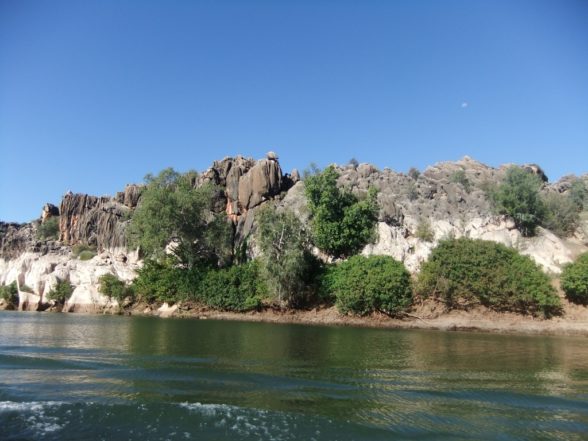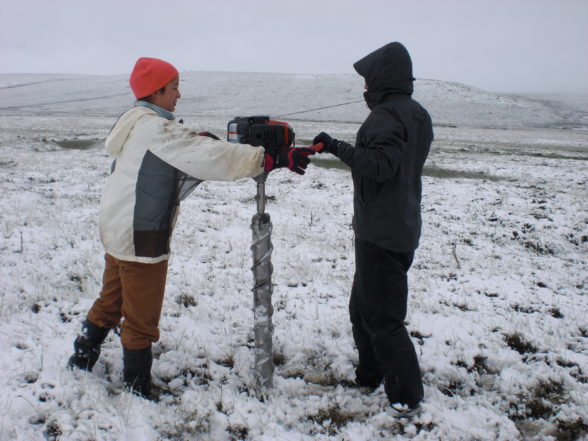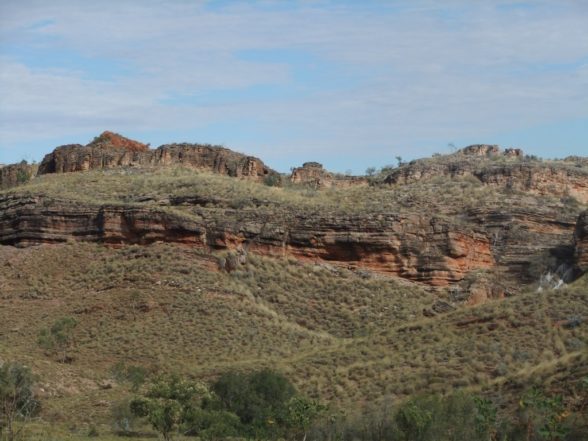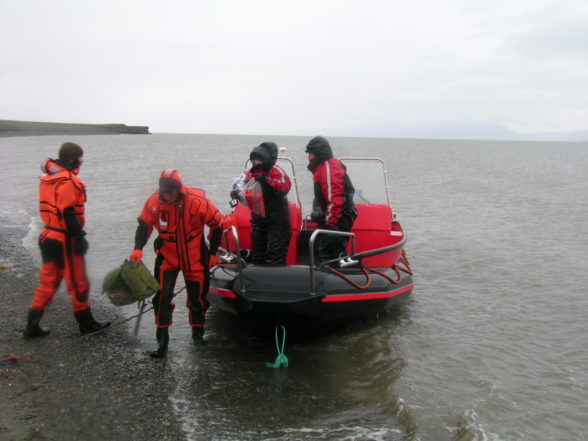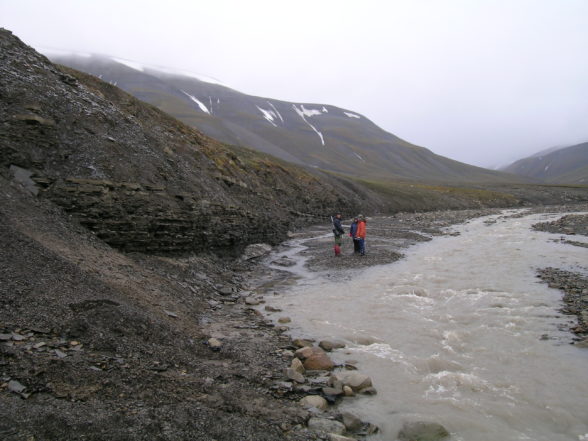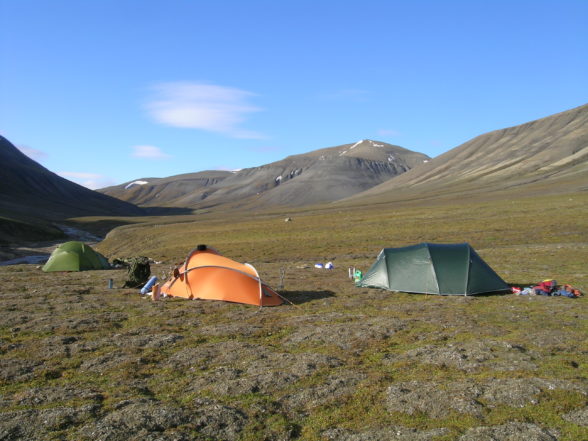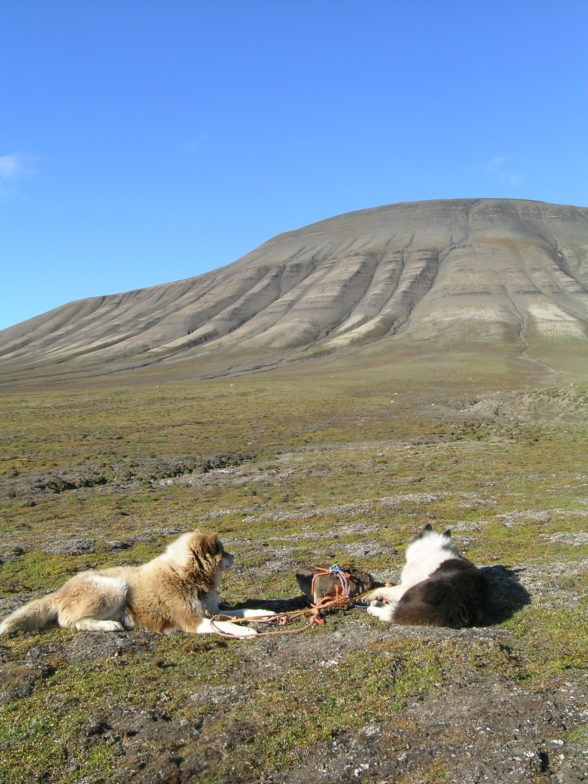WA Organic and Isotope Geochemistry Facility
The WA Organic and Isotope Geochemistry (WA-OIG) Facility is an internationally-recognised group contributing to world-class research in the fields of organic and stable isotope geochemistry; palaeogenomics and geomicrobiology.
Research focuses on the following areas: Petroleum and minerals exploration, paleoenvironmental studies (including the five largest mass extinction events and their associated recoveries), organic geochemical proxies of modern lakes, estuaries and oceans, paleoclimate change and the deep biosphere.
Techniques
Organic and Isotope Geochemistry and Molecular Biology labs:
- Sample preparation: Specialised coring, rock grinding and saw facilities for trace organic geochemistry
- Solvent extraction: Soxhlet extraction, ultrasonic extraction, microwave extraction
- Solvent removal: nitrogen evaporator, rotary evaporator
- Hydropyrolysis (HyPy) for generating biomarkers from macromolecular organic matter
- Automative preparative GC system for isolation of compounds from complex mixtures
- Compound-specific isotope analysis (CSIA): measurement of δ¹³C, δD, δ15N of liquid and gas samples- these can be from complex mixtures of petroleum, organic extracts containing biomarkers/ biomolecules, microbialites e.g. stromatolites, lake extracts, extracts from sediments or cores, extracts from sponges/ algae/ microbes etc.
- Access to δ34S- GC-ICPMS built in collaboration with WA-OIG and UWA for δ34S of organosulfur compounds in complex mixtures.
- GC-MSD volatiles (Gas Chromatograph Mass Selective Detectors [Agilent]) Application: GC-MSD with robotic specialised sample preparation systems (solid phase micro extraction – SPME stir bar sorptive extraction – SBSE, purge and trap thermal desorption – PT/TD and closed loop stripping analysis-CLSA units) for analysis of volatile organic and semi-volatile species in various matrices.
- Robotic SPE (Solid Phase Extraction)
- SBSE (Stir Bar Sorptive Extraction)
- Enzymatic ancient DNA repair
- DNA and RNA quantification
- Sample preparation for Illumina MiSeq sequencing of PCR products (past and present diversity studies)
- Sample preparation for Illumina HiSeq sequencing of reverse transcribed metatranscriptomes (to study gene expression: who was doing what at the time of sampling)
- Ectoenzyme activity experiments using fluorescently labelled substrates to study potential rates of microbial decomposition of complex organic matter.
- Thermal Desorption Unit ‘Unity2’ (TD-unit) [Supplier: Markes] Application: Analysis of VOCs in air samples by adsorbing these compounds onto a resin. This resin is placed into a thermal desorption tube and is then attached to a TD-unit to release the analyte. The unit can also be linked to a GC-irMS for the ¹³C/¹²C and D/H measurements of VOCs.
- Robotic SPME (Solid Phase Micro Extraction)
- Extraction of extracellular vs. intracellular DNA from environmental samples (water, rock, sediments, soils, stalagmites, corals)
- Agarose and denaturing gel electrophoresis (DGGE)
- Quantitative polymerase chain reaction (qPCR)
- Sample preparation for Illumina HiSeq sequencing of environmental metagenomes to provide a holistic overview of the genetic potential now and in the past.
- Bioinformatics and statistical tools used in diversity studies, metagenomics and metatranscriptomics to study ecosystem-environment interactions.
Applications
We research the application of biomarkers (organic geochemistry), compound-specific isotope analysis, palaeogenomics and geomicrobiology to a variety of priority areas. These include:
- Recognise the extent of Australia’s natural resources through petroleum, natural gas and mineral exploration
- Establish new biochemical pathways in extant organisms
- Study global anoxic events and mass extinctions
- Study climate trends both past and present
- Study microbial communities and activities in modern and ancient environments, including the deep biosphere
- Participate in the integrated ocean drilling program and petroleum source rock characterisation projects
- Develop novel tools used in organic geochemistry, isotope geochemistry and palaeogenomics
- Understand issues concerning the environmental sustainability of water, sediments and soil
- Monitor the ecology of modern lakes and coastal environments
Field Work Gallery
WA-OIG Highlighted Publications
Ancient molecules entombed in rock: ARC Archway Magasine Feature article
Publications related to this article.
- Grice K, Cao C, Love GD, Bottcher ME, Twitchett R, Grosjean E, Summons R, Turgeon S, Dunning WJ, Jin Y, 2005. Photic Zone Euxinia During the Permian-Triassic Superanoxic Event.Science. 307,706-709.
- B. Nabbefeld, K. Grice, R.J.Twitchett, R.E. Summons, L. Hays, M.E. Böttcher, A. Muhammad, 2010. An integrated biomarker, isotopic and palaeoenvironmental study through the Late Permian event at Lusitaniadalen.Spitsbergen Earth and Planetary Science Letters. 291, 84-96.
- Melendez, I., Grice, K., Schwark, L., 2013. Exceptional preservation of palaeozoic steroids in a diagenetic continuum.Nature Scientific Reports.
- Melendez, I., Grice, K., Trinajstic, K., Ladjavardi, M., Thompson, K., Greenwood, P.F., 2013. Biomarkers reveal the role of photic zone euxinia in exceptional fossil preservation: An organic geochemical perspective.Geology. 41, 123-126.
- Metcalfe, I., Nicholl, R.S., Willink, R., Ladjavardi, M., Grice, K., 2013. Early Triassic (Induan-Olenekian) conodont biostratigraphy, global anoxia, carbon isotope excursions and environmental perturbations: New data from Western Australian Gondwana.Gondwana Research. 23, 1136-1150.
- Tulipani, S., Grice, K., Greenwood, P.F., Schwark, L., Summons, R.E., Böttcher, M.E., and Foster, C.B., 2015. Molecular proxies as indicators of freshwater incursion-driven salinity stratification.Chemical Geology. 409, 61-68.
- Tulipani, S., Grice, K., Greenwood, P., Schwark, L., Haines, P.W., Sauer, P.E., Schimmelmann, A., Summons, R.E., Foster, C.B., Böttcher, M.E., Payton, T.D, and Schwark, L., 2015. Changes of palaeoenvironmental conditions recorded in Late Devonian reef systems from the Canning Basin, Western Australia: A biomarker and stable isotope approach.Gondwana Research. in press.

